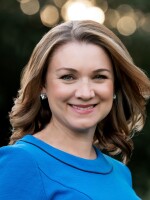If you only considered crowd size at rallies for Bernie Sanders and Hillary Clinton, you might wonder how Clinton has won so many big states. Sanders draws massive, enthusiastic crowds, while Clinton's rallies often seem tiny and subdued by comparison.
Monday night, the eve of five East Coast primaries taking place today, Sanders spoke to an overflow crowd — 3,200 people in total — at Drexel University in Philadelphia. His audience was more than double the crowd that showed up to hear Hillary Clinton speak at Philadelphia's city hall.
On Sunday, 14,000 were there for Sanders in New Haven, Conn.
6,600 in Baltimore, Md., on Saturday.
And 27,000 people came to hear Sanders in Manhattan's Washington Square Park a week before New York's crucial primary.
But Sanders went on to lose that state by 16 points. His big crowds haven't translated into the kind of wins needed to lock down the nomination. Why?
The Enthusiasm Gap May Be An Optical Illusion
Since last summer, when Sanders' huge rallies got him noticed by the national media, there's been a lot of discussion of an "enthusiasm gap" between Sanders and Clinton.
But in a recent Gallup poll, it was Clinton, not Sanders, who had the lead in enthusiasm among supporters. Fifty-four percent of Clinton supporters said they were "extremely" or "very enthusiastic" about their candidate, compared to 44 percent of Sanders' supporters.
It may be Clinton supporters are just less vocal, less likely to spend hours on social media praising their candidate or to show up at a concert-style rally (Clinton's campaign has also shied away from planning large events).
Crowd Size Simply Isn't A Predictor Of Winning
If big crowds meant big wins at the polls, former Vermont Gov. Howard Dean and former Texas Rep. Ron Paul would both be president. But election after election, crowd size has been an unreliable predictor of winning.
"The people at the rally are not a random or representative sample of the electorate," says Lynn Vavreck, a professor of political science and communication studies at University of California, Los Angeles. "These are strategic and well-planned events. This isn't just happening."
Rallies are designed to look like spontaneous displays of excitement for a candidate, but they are planned right down to picking a venue that will overflow rather than look half-empty.
Early on, when Sanders was only polling single digits and big crowds started showing up, they were seen as proof of the appeal of his insurgent message. Now that Sanders is well-known, the rallies give his supporters a feeling that they are part of a movement, something larger than themselves.
A Sanders adviser says the events, which Sanders insists on calling "meetings," play to the candidate's strengths and energize the campaign in cities where the rallies take place.
Vavreck went to a Sanders rally and she was impressed with the event.
"I had to put my fingers in my ears because there was so much screaming," says Vavreck. "It was, you know, like a One Direction [boy band] concert or something. So I think all of that is real. But it doesn't necessarily translate into more votes than the opposition."
So far, Hillary Clinton has received 2.7 million more votes nationwide than Sanders and leads significantly in pledged delegates.
Like The Grateful Dead or Phish
Howard Dean has endorsed Clinton rather than Sanders. But in 2004, he was the insurgent Democratic presidential candidate getting attention with big crowds. He ultimately came in third place in Iowa and his campaign fizzled.
Dean offers a couple of theories about what causes the disconnect. For one thing, when he was campaigning in Iowa back in 2003, he started to notice the same faces from event to event. He thinks that is happening with Sanders.
"Some of the crowd size is people who come because they love Bernie and they want to hear this message and it invigorates them and they keep doing it and they follow him around just like [fans of] the Grateful Dead or Phish."
'You Have To Build A Coalition'
Dean says there's a deeper issue than numbers. Eventually the insurgent candidate needs to go from playing the role of agitating outsider to someone voters of all stripes can see as president.
"And I couldn't change. And I knew I had to. But the crowd pulls you back," says Dean. "They're dying for you. They're bleeding for you. And it's very hard to do."
Dean says he sees Republican Donald Trump publicly struggling with it. And he says Sanders likely is, too. A speech with applause lines all your supporters can recite back makes for an amazing rally.
"But it's also the thing that isolates you at the end, because you have to build a coalition," adds Dean.
Put another way: big crowds aren't the same thing as a winning coalition.
Copyright 2021 NPR. To see more, visit https://www.npr.org.




